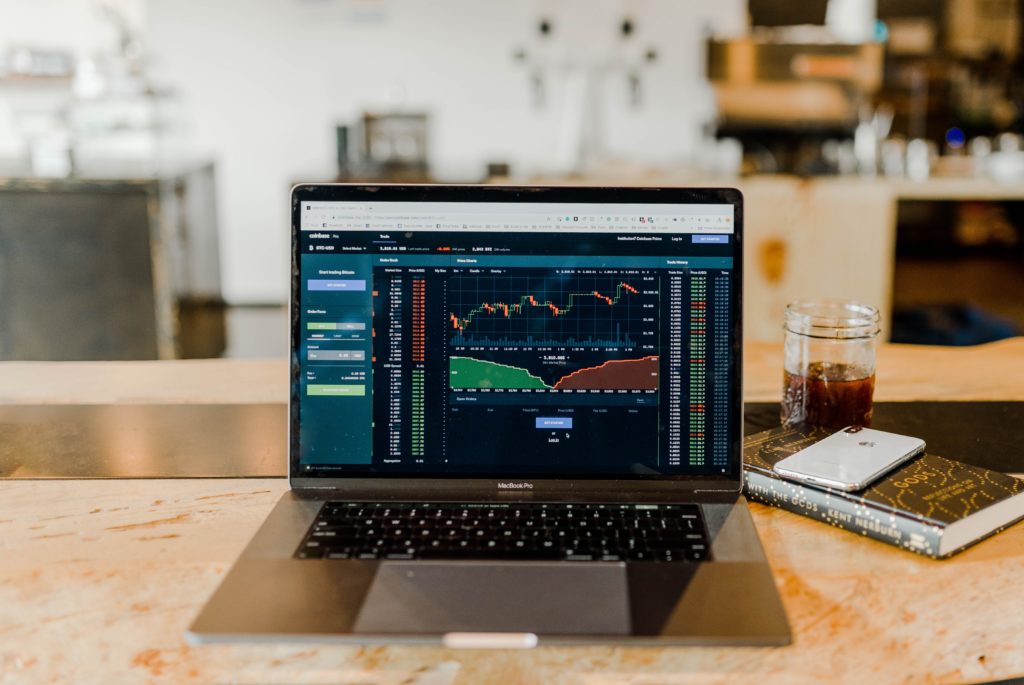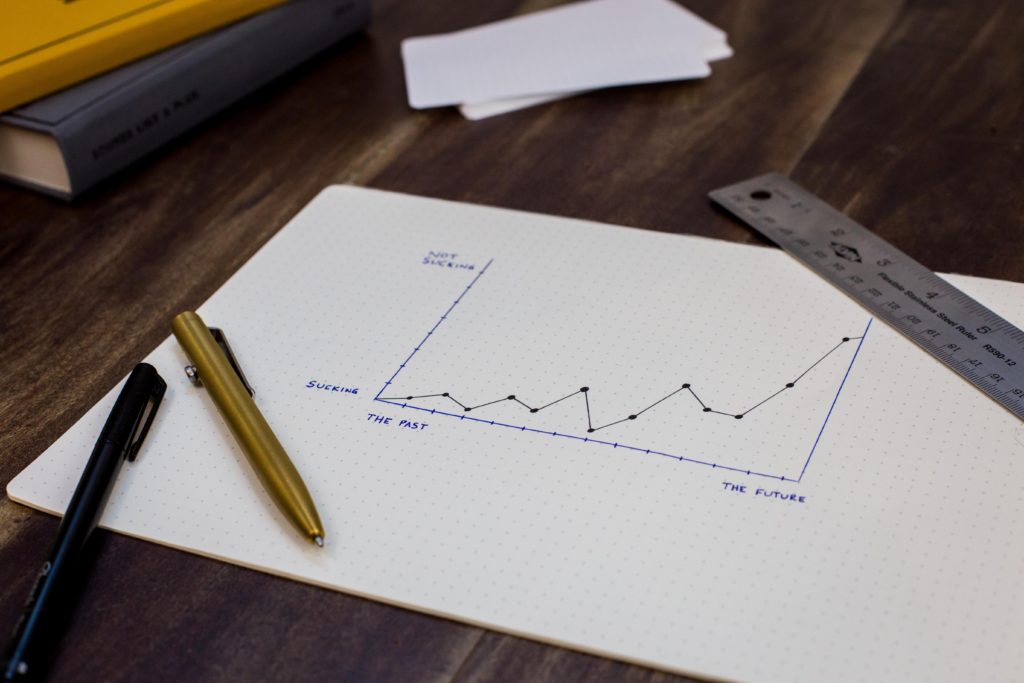- 1. What Is the Current Ratio?
- 2. Current Ratio Formula
- What are the Current Assets?
- What are the Current Liabilities?
- 3. How to Calculate Current Ratio?
- 4. Interpretation of Current Ratio
- 5. Current Ratio Example
- 6. Importance of Current Ratio
- Advantages of Current Ratio
- Disadvantages of Current Ratio
- 7. Limitations Of Current Ratio
1. What Is the Current Ratio?
The current ratio is a metric or ratio used to calculate the company’s liquidity, the company’s capability to pay short-term financial obligations or those due within one year.
It’s a very important ratio for investors and analysts it helps them to analyze how a company can maximize the current assets on its balance sheet to pay its current debt and other payables.
The ratio includes all the current assets and liabilities of a company and examines all of a company’s current assets to its current liabilities in contrast.
It is necessary for companies to classify assets and liabilities into current and non-current on their balance sheets.
This will simplify the calculation of the current ratio for liquidity analysis.
Here we just need to do pick up the current assets and current liabilities figures and divide the former by later.
If in case the company has not classified the current and non-current on their balance sheets or if the categorization is not available, then we need to evaluate the balance sheet line items to find out current assets and current liabilities.

Generally, the Assets and liabilities are mentioned in the downward order ( goes down).
For example Assets with higher liquidity will be appearing at the top and the assets with lower liquidate will be at the bottom of the balance sheet.
For a better understanding of the current ratio, first, we need to know what current assets and current liabilities are.
The current assets are cash or will be turned into cash in a year or less, and liabilities that will be paid in a year or less.
Current assets involve assets that can be easily converted into cash within a short period of time.
In order to calculate liquidity, analysts often use one year as the dividing line.
You’ll find current assets on the balance sheet as cash or short-term investments and these are the most visible current assets.
Apart from these, the current assets include accounts receivable ( the cash the company can collect on within a short period of time ), inventory that the company sells to generate cash.
Marketable securities also come in the current assets category even in case if they’re technically long-term investments because they can be liquidated.

The ratio points out the financial health of a company by comparing its total current assets versus the total current liabilities.
The ratio plays a significant role in measuring the company liquidity because short-term liabilities are due within the next year.
That outlines the set period of time for a company in order to raise the funds to pay for these liabilities.
If the company has larger current assets such as cash, cash equivalents, and marketable securities it can easily be converted into cash in the short term.
That means the companies with higher amounts of current assets are able to pay off current liabilities very easily when they become due without having to sell off long-term, revenue-generating assets.
Similarly, current liabilities are accumulated expenses that a company owes to third parties like suppliers and creditors.
Here also the accountants use the same one-year time period to evaluate the short-term nature of current liabilities.
Current liabilities involve accumulated expenses that haven’t yet been paid, accounts payable, short-term notes, income tax liability and the portion of long-term debt is due within the next year.

Current assets and liabilities can be found on a company’s balance sheet that involves assets and liabilities that can be either converted into cash within one year, for example, one-year Certificates of Deposit or inventory for sale, or short-term loans due within one year.
This ratio has certain limitations and complications to examine different industry groups and shortage of trending information.
Some times investors and analysts analyze the current ratio as working capital to evaluate the company’s capability to cover its short-term debt with its current assets.
The fluctuations in the ratio will determine what will be the current ratio good or bad.
Sometimes it may seem like an acceptable current ratio but it can be different and will struggle to pay its bills.
At the same time, it may seem like the company is struggling now but it could be making good progress towards a healthier current ratio.
In the first example, there are possibilities that the ratio can negatively impact the company’s value.
Generally, improvements in the ratio is an opportunistic signal for investors or analysts to invest in an undervalued stock in a company turnaround.

If the company has using its fixed assets to pay for its current liabilities, it signifies that the company isn’t earning enough from operations to support activities.
That means, the company is unsuccessful to earn profit and it is going under loss.
Sometimes it is the outcome of poor collections of accounts receivable.
This ratio will also give you deeper insights into the company’s overall debt.
If the company has accumulated large current debt then it will impact on company’s cash flow.
2. Current Ratio Formula
The Current Ratio formula is:
Current Ratio = Current Assets / Current Liabilities
To calculate the current ratio, we need to compare the company’s current assets to its current liabilities listed on a company’s balance sheet.
Current assets include cash, inventory, accounts receivable along with the other assets that are most likely to be liquidated or turned into cash in less than one year.
Current liabilities such as accounts payable, taxes payable, wages, and the current portion of long-term debt.
In general, an average current ratio or current ratio slightly higher than the industry is acceptable.
Typically a lower current ratio than the industry average may point out the higher risk of distress or default.
At the same time, if the company has a very high current ratio than the industry average, that reveals the management inefficiency to use their assets in an effective manner.

According to the GAAP standard or rules, the company is required to separate current and long-term assets and liabilities on the balance sheet.
This separation will allow investors and creditors to evaluate important ratios.
Generally, in the U.S. you will find current accounts are always reported before long-term accounts on financial statements.
What are the Current Assets?
Current assets cover all the assets of a company that is likely to be easily sold, used or consumed through the standard business operations, which results in conversion to a cash value over the next one year period.
Current assets are important for a company you’ll find this in the balance sheet, the time period serves a year from the date mentioned in the heading of the company’s balance sheet.
Current assets will cover all the assets such as cash, cash equivalents, stock inventory, marketable securities, accounts receivable, pre-paid liabilities, and other liquid assets.
In certain circumstances, the current assets are also known as current accounts.
Current assets are the assets that are expected to be converted to cash within one year.

In contrast, the long-term assets are the assets that are not likely to be turned into cash in the tie period of a year.
Long-term assets cover all the assets such as land, equipment, facilities, copyrights, and other illiquid investments.
What are the Current Liabilities?
Current liabilities cover the company’s short-term financial obligations that are due within one year or within a normal operating cycle.
The operating cycle is the time required for the company in the process of business operations from acquiring inventory and converting it to cash from sales.
Most of the companies will have a one-year operating cycle but in case if the company’s operating cycle is longer than one year, then-current liabilities are the financial requirements that will be due within the operating cycle.
Current liabilities are highly affected by the company’s operating activities or day-to-day business operations.
Typically, companies’ pay off the current liabilities by using current assets, these assets are used up within one year.
The largest current liabilities the company may own is accounts payable.
You will find the accounts payable is the largest liability the company may have and it displays unpaid supplier invoices.
Current liabilities include short-term debt, dividends, accounts payable and notes payable as well as income taxes owed.
Most of the companies try to adjust payment dates to ensure that the accounts receivables get collected before the accounts payables are due to suppliers.

Current liabilities will be mentioned on the company’s balance sheet in a separate section.
This will help to subtract the total from the company’s total amount of current assets in order to calculate a company’s working capital.
3. How to Calculate Current Ratio?
In order to calculate the current ratio, you need to divide current assets by current liabilities.
Typically, the ratio is mentioned in a numeric format rather than in a decimal format.
If a company has $500 in current assets and $300 in current liabilities, according to the formula the calculation will be $500 divided by $300.
Current Ratio = Current Assets / Current Liabilities
2.00 = $500/$300
That means the company can pay its current liabilities from its current assets two times over.
4. Interpretation of Current Ratio
A current ratio of 1 or less than 1 tells the company’s debts due in a year or less than a year are greater than the company assets (like cash or other short-term assets that are likely to be converted to cash in a year or less than a year.
The higher the ratio, say over 3, can express that the company can cover its current liabilities three times, it may signify that the company is not using its current assets efficiently or it may reveal the company’s inefficiency to manage the working capital.
However, in theory, if the company has a higher current ratio, that means the company is capable of paying its obligations and this is because of the larger proportion of short-term asset value the company has compared to the value of its short-term liabilities.
There are certain industries where companies can operate with a current ratio of less than one.
If in case the company is able to turn inventory into cash very rapidly than the accounts payable becomes due this will ensure that the current ratio can easily remain less than one.

Generally, the inventory is counted at the cost of buying it so the company intends to sell the inventory for more than this cost.
Therefore the sale will generate more cash than the value of inventory on the balance sheet.
Companies can maintain low current ratios if they can collect cash from clients long before they need to pay their suppliers.
The current ratio will help you to give you a simple look at a company’s liquidity.
Usually, the current ratio below 1 shows that the company does not have enough short-term financial resources to pay immediate expenses.
This will signify the company about the additional capital required to keep the business running.
The current ratio of 1.5 or greater is good enough to cover the operating needs of a company.
In contrast, if the company has a high current ratio that means the company is holding assets that aren’t strictly necessary.
Here it becomes important for a company to make sure that it does not use its assets in an inefficient manner.
It is very important to understand that the companies with the same current ratio as another’s don’t mean that they’re necessarily equally solid.
What type of current assets the company holds can make a huge difference in financial strength?
The company with most of its current assets in cash can pay off its short term financial obligations faster than the company that holds inventory and accounts receivable.
That means the company’s with most of its current assets in cash can easily pay off its short term obligations.
On the other hand, the company’s with the current assets in inventory and accounts receivable will have to generate cash by selling its products to pay its debts.

Regardless of these concerns, the current ratio can be used as a good ratio that offers a simple look at a company’s finances.
Comparing the current ratio of companies in the same industry can be a good way to evaluate which company is more financially secure than another in the short term.
5. Current Ratio Example
To better understand the concept of the current ratio considers an example.
Assume that you own a company and the company’s current assets are $600,000 and its current liabilities are $300,000 the current ratio is 2:1.
If your company’s currents assets are $600,000 and the current liabilities are $500,000 the current ratio is 1.2:1.
As we all know the higher current ratio is better than a smaller ratio.
Many people consider that a current ratio that is less than 1:1 indicates insolvency.
To get better idea investors, analysts compare a company’s current ratio to that of other companies in the same industry and also compare a company’s recent current ratio to its old dates.
6. Importance of Current Ratio
The Current ratio plays a significant role for investors and creditors to evaluate the liquidity position of a company and help them to understand the company’s capability to be able to pay off its current liabilities.
The current ratio will reveal the company’s current debt in terms of current assets.
For example, a current ratio of 3 indicates that the company has 3 times more current assets than current liabilities.
The ratio will also tell about the overall debt burden of the company. If the company carries high current debt, it leads to negative cash flow.
The current ratio is a very important metric to understand the liquidity position of the company but the ratio has certain limitations that everyone needs to keep in mind before using and interpreting the ratio.
Advantages of Current Ratio
- The current ratio helps to measure the company’s short-term financial strength. It helps investors and analysts to understand how cash-rich a company is.
- If the current ratio slightly higher than the average industry that signifies that the company is more stable.
- Lower current ratio often reflects or indicates the greater risk of liquidity associated with the company.
- Investors and analysts can easily analyze how the company is efficient to sell its products by evaluating a company’s operating cycle.
- From this operating cycle, the investors can easily access and understand, how fast is the company able to convert its inventory or current assets into cash.
- By understanding the current ratio of a company the management can optimize its production. This will help them to plan inventory storage mechanisms and optimize the overhead costs.
- The current ratio reveals the company’s capability to satisfy the creditor’s demands. This will also give an idea about the working capital management/requirements of the company.
Disadvantages of Current Ratio
- Using only the current ratio not sufficient enough to evaluate the company’s liquidity position because of current ratio considers the number of current assets instead of the quality of the asset.
- The same variation in a current ratio such as an equal increase or decrease in the current assets and current liabilities can lead to fluctuation in the ratio. So that it may possible that an overdraft against inventory can influence and change the current ratio. Therefore, it is very easy to manipulate the current ratio.
- The current ratio works in a different manner in companies with the seasonal business, you may find a lower current ratio in offseason and higher ratio in other months.
- The company’s inventory valuation methodology can highly influence its current ratio. This valuation methodology cannot influence the quick ratio since it does not consider inventory at all.
- The current ratio can lead to an overestimation of the company’s liquidity position in many cases because the ratio includes inventory in the calculation.
- In some cases, the current ratio can display the incorrect liquidity health of the company because of taking inventory under calculation where the company’s higher inventory exists due to fewer sales or obsolete nature of the product.
- The current ratio has certain limitations and it does not provide a detail representation of the company’s liquidity or solvency.
- Sometimes current ratio can give you misleading results when the current ratio involves a huge portion of inventory assets, therefore these assets can be difficult to liquidate. This may lead to complications if the company is using the accounting approach to cover an unusually large amount of overhead costs to inventory, which can maximize the recorded amount of inventory.
- The current ratio can give you wrong results at the time when the company draws upon its line of credit to pay bills as they come due, this shows that the company’s cash balance is near zero. In this situation, the current ratio can lead to being fairly low, and yet allow the business to pay in a timely manner due to the presence of a line of credit. In this situation, the company can utilize an unused portion of the line of credit, which can be used to pay additional bills. But still, it is an unanswerable question that whether the company will be able to pay down the line of credit.
- The current ratio alone does not mean anything. It does not give any information about product profitability etc. The current ratio can be easily manipulated by the company. Because it is easy to increase both current assets and current liabilities that will decrease the ratio at the same time management can decrease in current assets and current liabilities that will increase the ratio.
7. Limitations Of Current Ratio
The current ratio has certain limitations while comparing different companies with one another.
Entities can vary between industries, therefore it is unlikely to get productive insight while comparing the current ratios of companies with different industries.
Typically, the industries with the extended credit are more likely to have a stronger current ratio because their current assets would be higher.

Take an example, there are certain industries that may provide extend credit to clients for 90 days or longer but in certain industries short-term collections are necessary.
It becomes very important to understand that the ratio can give you productive insight but you have to use it in companies from the same industry.
Because of the companies with different industrial sectors will have different operating methods, business operations and cash flows that can influence the ratio calculations.
Comparing the current ratio of companies from different industries will not provide useful insight because companies have different financial structures in different industries.
Therefore it is a common practice to compare companies within the same industry that have similar business models.
The ratio has certain limitations while comparing different companies with one another.
Recommended Readings
